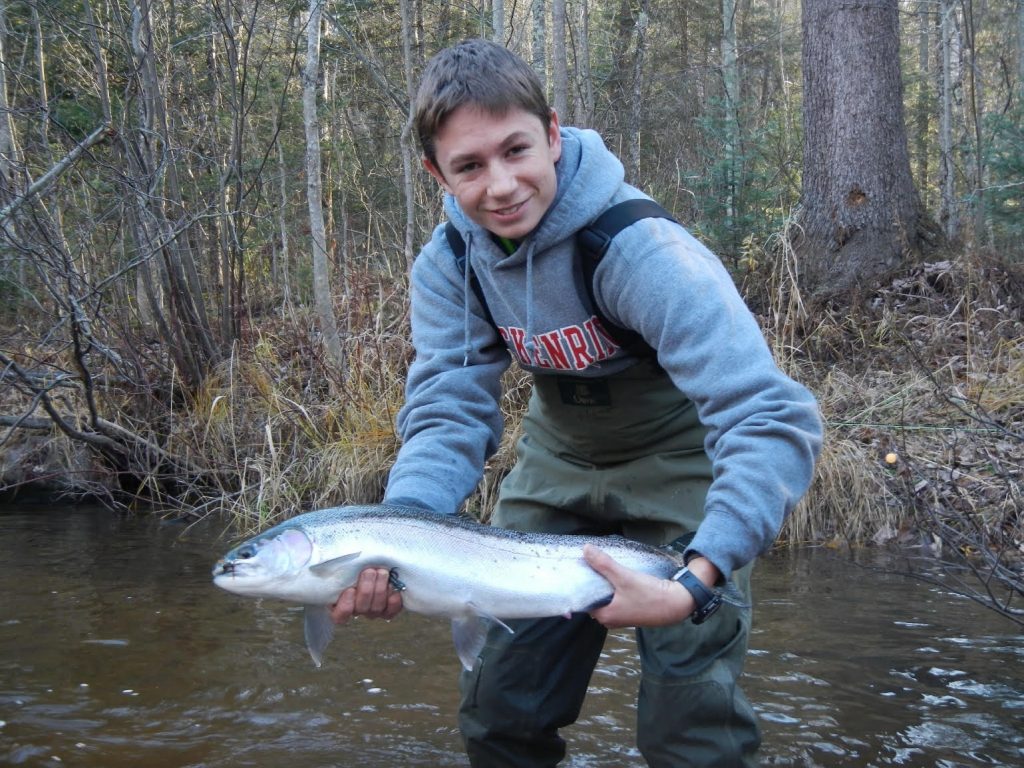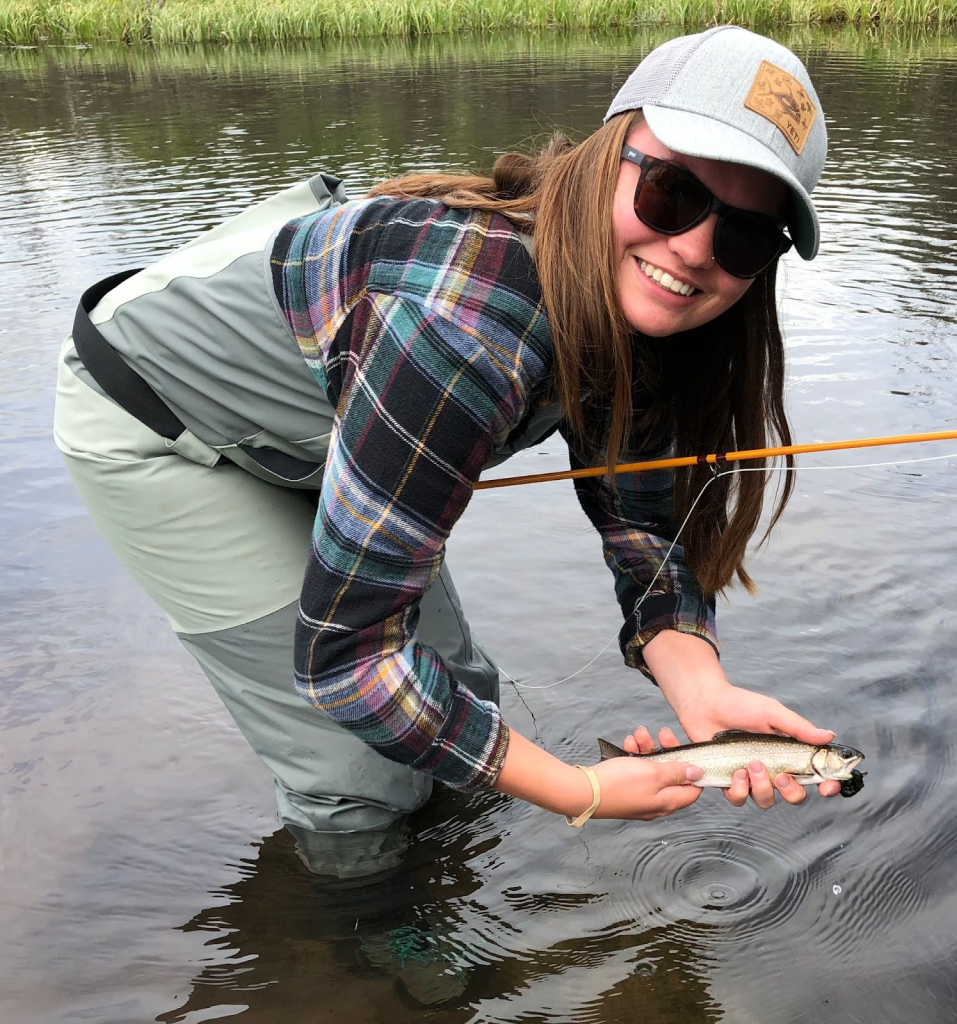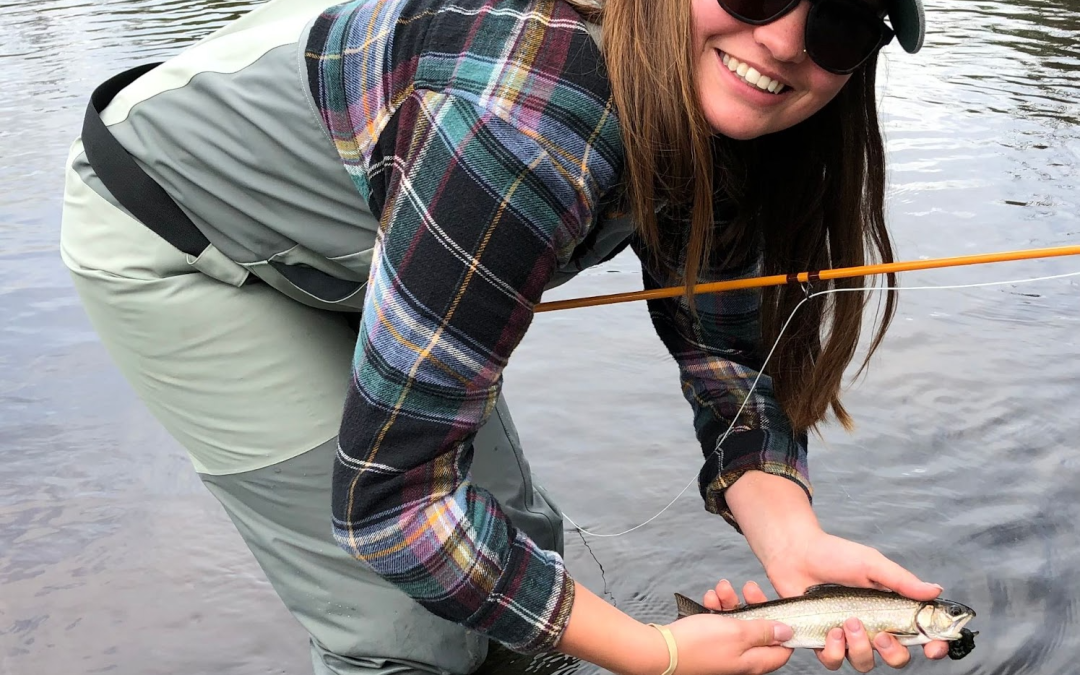The Final Stage

You have undoubtedly heard the five stages a trout fisher goes through: catch a fish, catch a lot of fish, catch big fish, catch difficult fish, and finally be satisfied with the act of fishing itself – whether or not the fish decide to cooperate.
My journey started in the 4th grade, fishing Trout Brook in Hudson every morning after finishing my paper route. I eventually caught my first trout by pegging a worm on the bottom of a hole coupled with a big split shot. Despite only processing 5th grade educations, by the next year, my mates and I invented euro nymphing albeit using long spinning rods and garden hackle. Now we were catching a lot of trout in water not known for great numbers and an added benefit was our bycatch of suckers and carp greatly decreased. The following year, the nightcrawlers on the lawn of the old Hudson courthouse their nightly sojourns after a summer rain were never bothered again by my flashlight wielding buddies and I. We changed our tactics and used Mepps and Panther Martin spinners (spin fishers don’t overlook a floating #5 Rapala either). Overall, the fish got bigger (especially at night) and the rough fish were eliminated.
During junior high, my parents bought a camper on a lake in Siren, Wisconsin chock full of pike. Sadly, I abandoned trout fishing and became a big pike fisherman using my paper route money to buy a boat. It wasn’t until many years after college, marriage, and kids, that my brother-in-law introduced me to fly fishing and I again fell in love with trout and the rivers they inhabit.
Forgetting all the trout knowledge I gleaned in grade school, I floundered mightily with the fly rod and was undone by poor casting and new enemy, drag. Needing help, I enrolled in a fly fishing class taught by Mike Alwin. A light bulb went on when Mike described how to swing soft hackles. This seemed to be a method that could disguise my inaccurate casts and luckily drag was actually integral to the method. When the class hit the upper Kinni for our “final”, I found success! BWOs were coming off in a riffle and swinging my new favorite fly, a partridge and yellow, I caught 11 trout! All that spring, I was swinging my way down the Kinni, covering surprisingly long distances (only discovered upon the slog back upstream) and encountering quite a few fish.
After a season of swinging, I decided to work on my nymphing game. If 90% of what a trout eats is subsurface, I figured this is how to rack up the numbers and I was right. The discovery of the water load cast was crucial to me doing more fishing and less untangling of double nymph/thingamabobber rigs.
I have never been a dedicated streamer junkie, but I have connected with some big fish, hitting the banks with streamers while fishing back to the car after an evening hatch is done. My biggest trout have come steelhead fishing on the Brule by chucking eggs and legs (Superior X-leg nymph with an egg pattern tied off the bend of the hook) all day long or fishing the hex hatch on the White and Brule rivers. Dry flies the size of hummingbirds bring the big browns out of hiding and makes braving the hordes of mosquitos worth the effort.
For my next stage, I decided to take on the tricos a few of years ago. This hatch of insects, size 20-26 occurs daily from late July through early September, so the trout get very, very picky – they know exactly what a trico is supposed to look like. The water at this time of year is low and clear and to top it off, much of the feeding is for the spinners in the slow water below riffles. Dead spinners don’t move at all and the trout can get a good long look at the fly before committing. It took quite a bit of scouting to find areas with good hatches. Then it took a couple of years to figure out techniques, patterns, and leader set-ups that work for me. It was truly a challenge.
Well, that takes us up to this past season. Was I content to just get out, regardless of the results? Almost there! I wouldn’t be upset with a skunking, let’s call it “mildly irked.” One fish sure would have been nice. Being quite competitive in nature, I did not think I would get this far when I first started, but here I am, free to trout fish any darn way I chose. Very early in my journey I read every trout fishing book in the Washington County library system and purchased a good deal more. Some of the books, written across the pond, expounded on the requirement in some local streams to only fish dries flies upstream, to rising trout, which struck me as utterly ridiculous. And yet I stand here today, not as a dry fly snob — please trout fish any way you choose — but certainly a dry fly enthusiast. Without the need to rack up numbers or size, I no longer feel the need to fish from dawn to dusk. I fish whatever is emerging at that time of the year. During the hex hatch I will sleep in and wait until 8 pm before leaving the cabin. Conversely, if it is trico time, I will be on the water at first light and off the water enjoying a late breakfast by 10:30 am, when the spinner fall is over. My overriding rule, however, is that the best time for trout fishing is whenever you can go — and often that is when nothing is hatching — so I always carry a fully stocked nymph box.
I taught my kids to fly fish which was very satisfying, and I now find that helping out a stranger at streamside is a joy as well. Having a new friend catch a fish is more rewarding now than catching one myself, something that would have never occurred to me when I first started.

My son, Brian, is following the same path, as I did. He sits at the vice tying huge pike flies often with gobs of yellow bucktail and red hackle feathers, replacements for the Five of Diamonds spoons I used to hurl out with my spinning rod when I was his age. He is also looking for big trout too using these streamers and fishing the hex hatch.

In contrast, my daughter reached the final stage before I did! She went from catch a fish, to just happy to get out on the stream. I realized this, one night when the trout were tearing into sulfurs like stripers in a school of menhaden and I was laser focused on my #18 comparadun bouncing down a riffle. She tapped me on the shoulder and told me to look up to see an incredible sunset that made my jaw drop. I felt sheepish knowing that I would have never noticed it had she not been there. She has become almost a brook trout purist and claims to only need one fly to catch them, a #18 CDC Caddis. She is out in the world now and I don’t get to fish with her much anymore but I can’t doubt her. Her fish photos are all of brook trout and unless she is secretly hitting up the fly shop bins that is the only fly she asks me to tie for her. She has no need for big fish, as the small brook trout are “so cute” and their small bodies “concentrate all their beauty.” When she reports catching no fish, I ask what was hatching and did she try a different fly say a nymph, streamer, comparadun, or soft hackle. No, she didn’t try those, but then I’ll receive photos of what she did “catch”; the deer that came streamside to get a drink, the beaver cruising up the opposite bank, the bald eagle watching over her, and the wildflowers. She is on to something. She never gets skunked.


